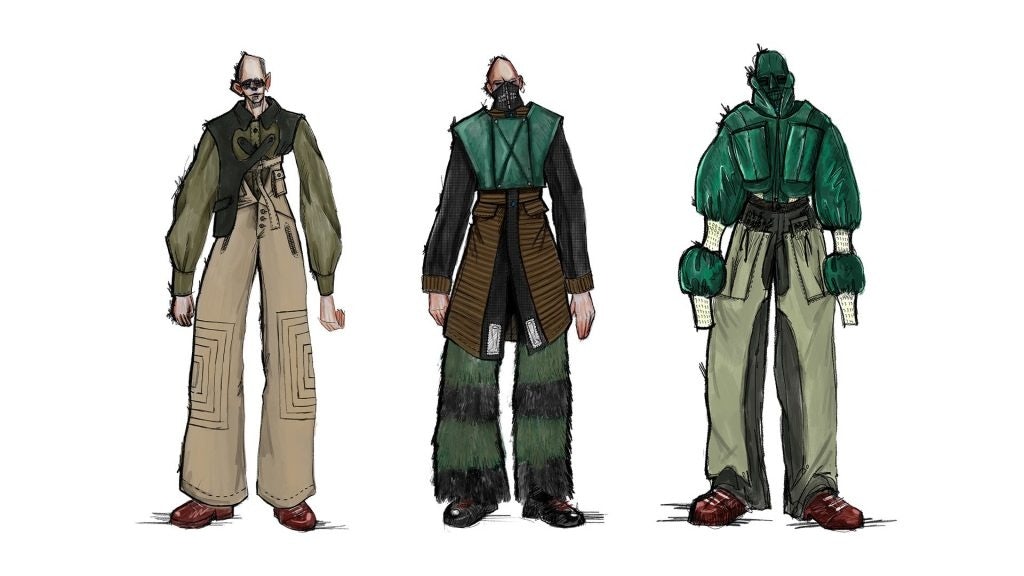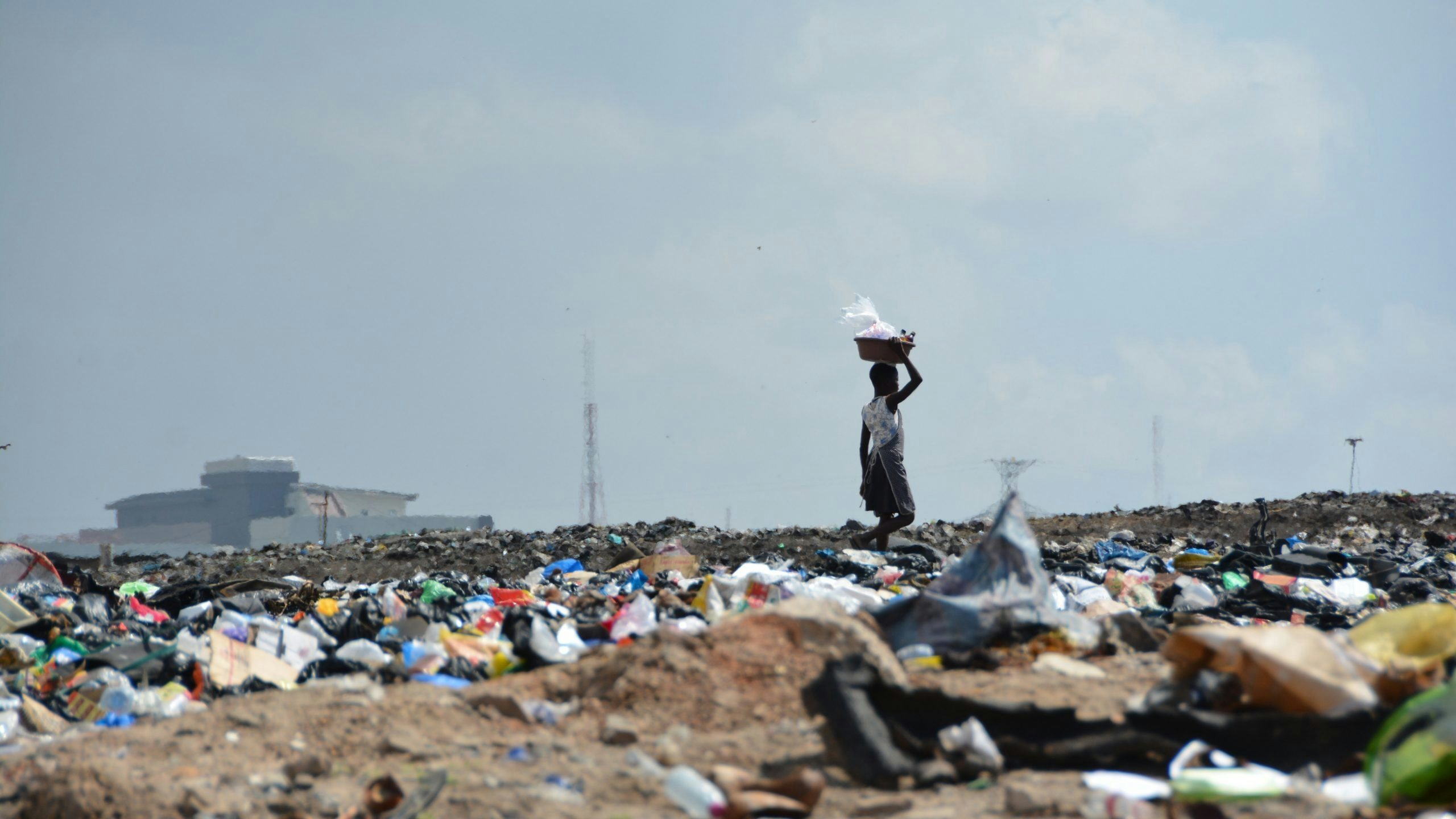Hong Kong-based environmental NGO Redress has long sought to foster change in the fashion industry through thought leadership and by hosting design competitions. But it’s a monumental task.
Up to 92 million tonnes of clothing ends up in landfills each year, and according to climate NGOs like Earth.org, the volume of fashion waste will rise to 134 million tonnes by 2030. If this trend continues, the fashion industry’s global emissions are set to increase two-fold by the end of this decade.
With the rise of fast fashion giants like Shein, Zara and H&M in recent years, and as global fashion production has doubled over the past 20 years, according to Bloomberg, pressure has been mounting on all sides. Consumers and NGOs are calling for more sustainable practices in the 1.5 trillion fashion industry.
Some brands have already made major strides by switching to recycled materials. Ninety-six percent of the polyester Adidas uses is recycled. Meanwhile, businesses like H&M, Levis Strauss & Co and Burberry have been moving from chemical to natural dyes, according to Bloomberg.
But groups like Redress believe more needs to be done.
The NGO recently held its Redress Design Award 2023, its 13th iteration, in partnership with the Hong Kong government at the city’s Centrestage fashion showcase to inspire sustainable fashion design practices.
Contestants from Hong Kong, India, Sri Lanka, the US, France, Australia and other nations spent months coming up with new designs that incorporate circularity, zero-waste, upcycling and reconstruction techniques and sustainable sourcing strategies in their final collections.
"We are seeing that sustainable design, through upcycling waste materials, is a strong technique and opportunity for Asian and Chinese designers, who are used to high waste rates due to the region's prolific textile and garment industries, which generate waste even if they are very efficiently run,” Redress founder Dr. Christina Dean tells Jing Daily.
Germany’s Nils Hauser won this year’s award for his “Ex Voto” collection, which showcased a somewhat dystopian series of multifunctional garments and looks — including masks and other accessories from a “lost city that was destroyed and rebuilt.”

Hauser will work with Timberland to launch a new, sustainability-focused line.
Dean says the key to the issue is supporting new generations of fashion designers to actualize their visions in a sustainability-friendly way.
“These [designers] have been born into an industry that is already creaking at the seams, with waste being a particular problem,” she says. “So, there's a strong sentiment that they want to contribute solutions, albeit their solutions may feel inadequate compared with the scale of the waste problem.”
Beyond inspiring better practices via competition, Redress says the fashion industry needs to transform to reduce its environmental impact.
Signs of change are emerging. Most recently in China, outdoor apparel brand Patagonia discouraged consumers from purchasing its products during the country’s “618 Shopping Festival” in June — instead encouraging them to “buy less, play more.”
Earth Day, held on April 20 each year, is an increasingly significant event for Chinese consumers, which has prompted domestic and foreign brands alike to deploy sustainability-focused activations.
For instance, Chinese athletic apparel brand Li-Ning introduced an exclusive collection of recycled skater apparel in collaboration with Steve Harrington.
Second-hand and upcycled garments#
Fashion designer Lam Wing Wum is one of many young Hongkongers who have taken up secondhand shopping.
“In the past, I had misconceptions about second-hand clothing because I thought it was dirty,” Lam says. “But when I was on exchange in The Netherlands, I saw there were a lot of secondhand clothes, vintage stores.”
The clothing wasn’t even from the 1980s, Lam explains.
“These clothes were from as far back as the 1940s, and the workmanship was a lot better than it is nowadays … Even a small jacket would have numerous pockets, quality stitching and embroidery. I was amazed by the quality, and I bought a lot of vintage clothing,” she says.
Today, Lam produces her own collection of upcycled clothing made from items she buys from some of the city’s secondhand sellers.
“I add embroidery to secondhand clothing in the hope it can go back into the market again,” she says. “Some minimal embroidery can make clothing feel brand new.”
In Hong Kong and mainland China, Lam says awareness of vintage clothing is still low, but it is growing.
Patrick Lam, another Hong Kong-based designer whose collections are created via upcycled materials, agrees that it will take time for Asian consumers to understand sustainability. A lack of familiarity with concepts like sustainability as well as alternative eco-friendly options impacts people's choices.
“Fast fashion is very popular, and consumers get little chance to [learn] and understand what it is,” he says. “Why think about quality over style?”
Tackling the larger issues#
Beyond new designers embracing sustainable practices and launching eco-friendly collections, the entire supply chain needs to improve, argues Redress.
Hannah Lane, director of partnerships at the organization, says brands like Shein are often their preferred collaborators.
“Essentially, they are selling fast fashion, disposable fashion — I can't make peace with those things, personally. But from a Redress point of view, we try to collaborate with those who are the worst in the industry, actually, because that's where the most help is needed,” Lane says.
“Doing something is better than doing nothing,” she continues, adding that even if Shein or H&M were to move out of the fast fashion market, another player would take their place.
“It's better that the players that exist are improving rather than pulling out and changing their business models,” she says.
In terms of new industry trends, Lane says she has noticed a rise in fashion brands and designers group-buying costly eco-friendly materials in order to obtain a better price.
There are smaller sourcing hubs, particularly here in Hong Kong, which help match designers with unused industry waste material, says Lane.
“Connecting with smaller batch runs of fabrics or samples, [is] getting cheaper. Some of our designers don't even pay for their fabrics, because they have collaborations with local partners,” she explains.
Zooming out, although progress is visible, activists and NGOs like Redress say much more needs to be done in Asia.


